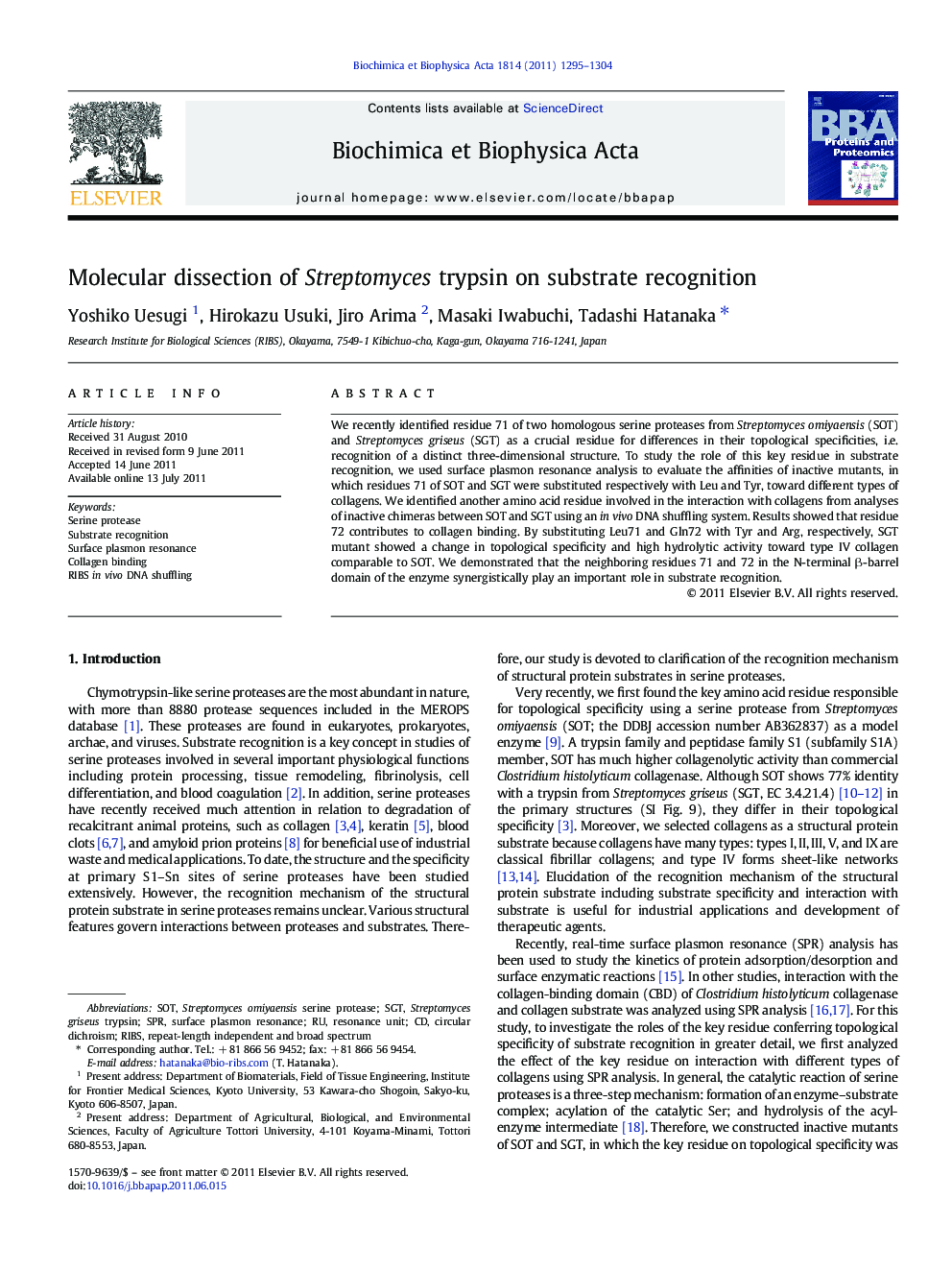| Article ID | Journal | Published Year | Pages | File Type |
|---|---|---|---|---|
| 1178744 | Biochimica et Biophysica Acta (BBA) - Proteins and Proteomics | 2011 | 10 Pages |
We recently identified residue 71 of two homologous serine proteases from Streptomyces omiyaensis (SOT) and Streptomyces griseus (SGT) as a crucial residue for differences in their topological specificities, i.e. recognition of a distinct three-dimensional structure. To study the role of this key residue in substrate recognition, we used surface plasmon resonance analysis to evaluate the affinities of inactive mutants, in which residues 71 of SOT and SGT were substituted respectively with Leu and Tyr, toward different types of collagens. We identified another amino acid residue involved in the interaction with collagens from analyses of inactive chimeras between SOT and SGT using an in vivo DNA shuffling system. Results showed that residue 72 contributes to collagen binding. By substituting Leu71 and Gln72 with Tyr and Arg, respectively, SGT mutant showed a change in topological specificity and high hydrolytic activity toward type IV collagen comparable to SOT. We demonstrated that the neighboring residues 71 and 72 in the N-terminal β-barrel domain of the enzyme synergistically play an important role in substrate recognition.
Graphical abstractFigure optionsDownload full-size imageDownload high-quality image (186 K)Download as PowerPoint slideHighlights► Residue 71 of Streptomyces trypsin is crucial for topological specificities. ► Residue 72 contributes to collagen binding. ► These residues synergistically play an important role in substrate recognition.
